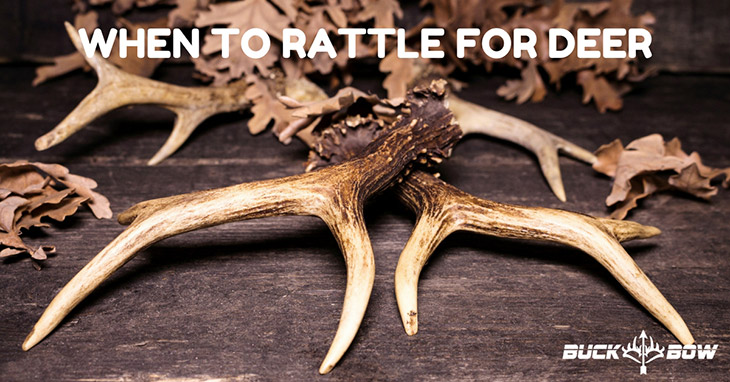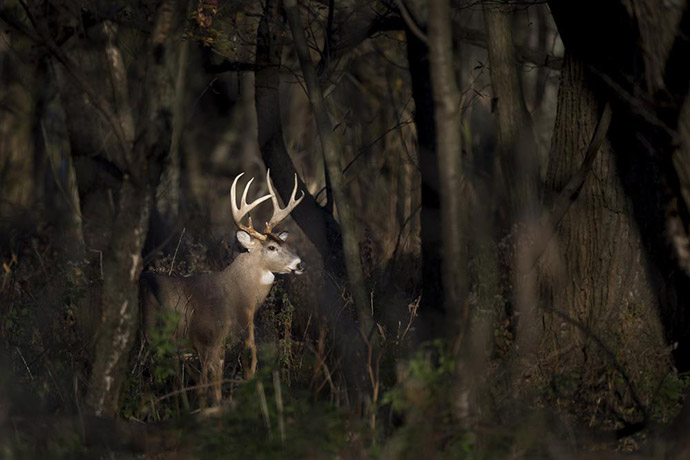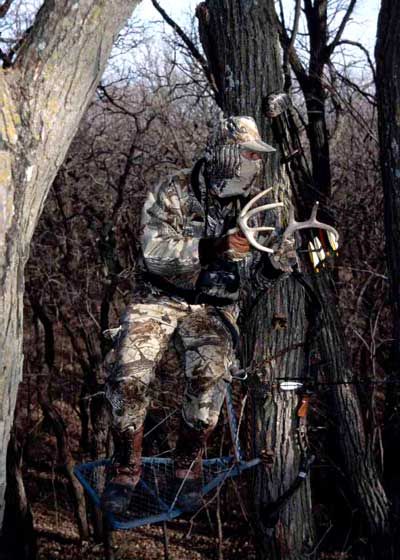Have you ever tried to make rattle calls but still fail to attract any bucks your way? If yes, then you may have been rattling your antlers at the wrong time, in the wrong place, and using the wrong way.
Don’t just rattle randomly and hope for the best! You need to have a strategy and good technique to attract bucks with your rattle calls. Today, not only will I discuss when to rattle for deer, but I will also give helpful tips on how to make the most of your rattling efforts.
When is the Best Time to Rattle for Deer?
In theory, you can rattle for deer at any stage of your hunt. However, to maximize their effectiveness, you may want to time your calls at certain periods of the day.
For instance, I prefer to make my rattle calls early in the morning, usually from 8:00 to 9:00 a.m. I’ve also observed that more bucks respond to early morning rattle calls, so you may have a bigger chance of attracting deer when you rattle from 7:30 to 10:30 a.m.
If you plan to hunt a bit later, you may have more luck attracting bucks when you rattle in the late afternoon as opposed to midday, or what I like to call the dead hours (11 a.m. to 2 p.m.).
Deer also tend to respond quicker on cool days when there is little to no wind. This is understandable, as sound travels faster if there is no wind to resist it. For windy days, I’ve discovered that deer often respond faster to rattle calls downwind, as the wind may carry the sound with it as it blows.
Another thing I’ve discovered is that bucks respond better to rattle calls during the peak rut. However, if you’re more focused on harvesting mature bucks, you may want to start your rattling efforts as soon as the rut starts to slow down, as older bucks may now be looking for straggler does that have not yet been bred.
Where Should You Rattle for Deer?
Via biggamehunt.net
To increase your chances of attracting a buck, you need to consider your hunting ground’s wind direction before you start rattling for them.
I’ve noticed that a lot of bucks respond to my rattling call from downwind as opposed to upwind. You may want to take this into consideration and place yourself in a strategic location that will allow you use the direction of the wind to your advantage, not only for the rattle call but also for hiding your scent from your game.
You may also want to choose a spot with good ground visibility, where you can keep an eye on the downwind direction and still be aware of the rest of your surroundings. This way, you can increase your chances of spotting a buck that is responding to your call, whether it’s headed downwind or upwind.
Rattling Tips and Techniques
Here are some helpful tips and techniques you may want to try to increase your chances of rattling successfully:
Start slow and steady. Don’t go on a rattling frenzy from the get-go, as this may just scare a buck away instead of attracting it. Instead, start with a slow and quiet beat and carefully build a steady rhythm until you reach your peak noise level.
Be loud. I know, I know, I did say that you need to start off nice and quiet, but make sure you build up your rattle to a hard, loud call that the deer will surely hear. Starting off quietly may prevent nearby deer from running away, but hard, loud calls allow you to attract bucks from farther distances.
Be realistic. Don’t rely solely on your rattle. Try to make other deer sounds, such as grunt calls and hoof scratches, to imitate a real doe’s sounds. If you make your rattling sound fake, there are fewer chances that a buck will approach to check out the sound.
Time your rattles evenly. Try to stick to minute-long rattling calls at the start, and then gradually build up to calls that last for two to four minutes. Leave a five-minute interval in between each call, and spread out your sessions to every thirty minutes to give bucks time to move to your spot.
Conclusion
Rattling calls is a great way to attract bucks to your hunting spot, as long as you know how to do it properly. This means starting your call slow and quiet and building a nice, loud rhythm and combining it with other deer sounds to make your call sound more natural.
While the best time to rattle for deer is in the early morning (7:30 a.m. to 10:30 a.m.), you shouldn’t stop rattling altogether after that. Remember, there’s always a chance that there’s a lone buck wandering near you that may just be curious enough to check out the call you’re making.
Is this article helpful? When do you usually rattle for deer? Write them down in the comments’ section below. Let’s discuss!




1 Comment. Leave new
[…] rattling antlers copies the sound of two bucks fighting each other. Doing this might make a passing buck think that […]